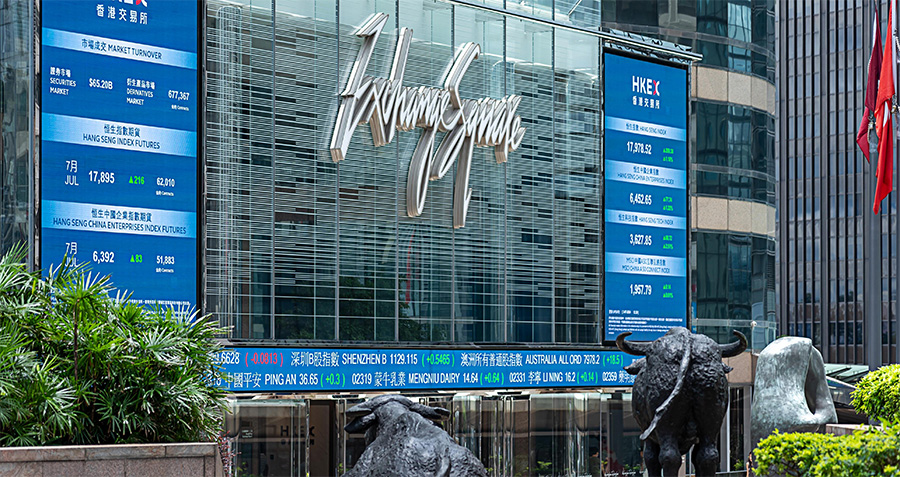
Carnegie Endowment’s Yukon Huang offers a new perspective and demystifies some popular notions about China, such as fears about the real estate bubble.
China is one of the most closely observed countries in the world, yet views about its economy are oftentimes contradictory. Take for instance the country’s growth model—conventional wisdom tells us that the share of fixed asset investment in China’s GDP is too high to be sustainable, and thus China urgently needs to balance its economy by reducing its reliance on investment.
But not everyone buys that. Yukon Huang, Senior Associate at the Carnegie Endowment for International Peace and former World Bank Director for China, says that there’s nothing wrong with a high investment-to-GDP ratio itself. Instead, he argues that investment, as long as it’s efficient and creates real value, will help set an economy on a high-growth trajectory, which has proven to be critical for a developing country to move into the upper-income class.
In a recent interview with CKGSB Knowledge, Huang shared his observations on the Chinese economy, some of which may challenge what you usually read in the financial media. We have picked six perspectives that might surprise you the most and prompt you to change your perceptions of the world’s second-largest economy.
China’s property market is not a bubble.
China’s property market is different from other countries’ because private property didn’t exist in China a decade and half ago.[1] It only began when the country allowed employees to buy their apartments from their enterprises or government agencies. It would take a long time to create a true property market, which determines the value of the land. People are worried because the pace of the value increase has been enormous, but remember the increase started off from zero.
The only other [similar] example we have is Russia, which also didn’t have a private property market 15 years ago. Property prices in Moscow and Saint Petersburg, the two major cities increased tenfold over a decade and became comparable to European prices at the end.
On the other hand, even though property prices in the smaller cities in China haven’t risen by as much as in the mega cities like Beijing and Shanghai, there’s probably more of an overbuilding problem in those smaller towns. Overall for the country you do have an excess stock and prices could fall by as much as 30% in the next couple of years. But it’s a cyclical adjustment, not a popping of a housing bubble.
China’s debt-to-GDP ratio is less alarming than it sounds.
The surge in debt as a share of GDP occurred since the global financial crisis. It started off the major stimulus program. A lot of the debt was channeled through the government and state-owned enterprises (SOEs). GDP did grow but not by as much as people thought it would. If the government continues to expand credit, it’s not actually getting as much payback in GDP growth as it used to.
If you look at the Asian financial crisis in the late 1990s, the government’s stimulus programs led to more growth than the recent experience. What has changed is that 15 years ago there was no private property market. And in the last five years, a lot of credit has gone into property. This doesn’t increase GDP [by as much] because in the GDP accounts, the transfer of the land and the rise in land prices don’t show up[2]. GDP doesn’t include asset transfers and asset price increases.
There’s nothing wrong with [land development] as long as it’s really profitable and sustainable because you’re creating wealth. So the issue in China is whether the property has real value. The answer is that the most of it does. It may come down a little bit because the market overshot, but it won’t crash.
Another concern is China’s corporate debt[3]. A lot of the corporate debt was concentrated among large SOEs and they do have a financial problem. But it’s for the state, not the company. Is that a problem for the government? It would be if the government were heavily indebted. But it is not, by international standards. That means the government has a lot of financial room to maneuver. They can absorb this debt.
But the burden is increasing; they cannot continue to do this every 10 years. So if there’s going to be a crash, it’s not a problem for today or tomorrow. It’s a problem for the next generation. But China has time to get its budget into a sounder financial situation.
The key is the fiscal reform, which doesn’t receive enough media attention.
China in June passed a fiscal reform program, which determines which local authorities can borrow. It started off with big cities and stronger provinces, which are allowed to borrow through floating bonds[4]. But for a bond market to develop and to be sustainable, they have to pledge their ability to repay those bonds when they become due. That means that they have to have a sensible fiscal system. So the real challenge for China is establishing a fiscal system that’s appropriate for the local and central levels.
It’s too early to tell [if China can address the challenge successfully] because we don’t know how serious the reform effort is. These are fairly bad habits—it’s easy to rely upon local government financing vehicles (LGFVs)[5]; it’s very easy for local authorities to try to get land from farmers and others, develop it and make a lot of money. But you can’t continue doing this because you’re running out of land.
The role of consumption is understated by at least 10%.
China’s consumption as a share of the GDP is very low—it’s only 35%. But the first thing we have to realize is that number is misleading: it’s probably at least 45% of GDP.
One reason is that the National Bureau of Statistics doesn’t include a lot of housing expenses in its national accounts. If you look at the GDP accounts in China, they show household expenditures on housing to be between 2% to 3%. In other countries it’s around 15% of GDP. In other countries, if you own your property, it doesn’t mean you’re not spending on housing—you have what’s called imputed housing expenses, which is essentially what people have to pay to rent your place and that’s counted as GDP. But in China they didn’t know how to impute it because they didn’t know the value of the property[6].
The same is true for some companies and government agencies. They often provide transport, food or clothing allowances—this is consumption. But instead they’re very likely counted as investment or business expenses. In China, there’s a bias in the system—consumption is bad and investment is good. So the governments and companies have a bias to record something as investment but not consumption.
There’s no need to balance China’s growth yet
What’s unbalanced growth? Some people define it as the investment share of the economy is very large and the consumption share is very low—China over-invests and under-consumes. They tend to compare China with Japan and America today, which is inappropriate. If you want to compare the Chinese economy with Japan, you should compare with Japan 30 years ago or the US 100 years ago, when they were middle-income economies.
And you’ll see that every one of these economies [that are still developing]—their growth was unbalanced. The only successful countries, which rapidly went from low to middle to upper income, have unbalanced growth and China is going through the same process. So there’s nothing wrong with unbalanced growth. Ironically, the relatively unsuccessful countries like the Philippines and Indonesia—their growth is balanced.
So the real issue is whether you can invest your money sensibly—because China has wasted a lot in the past four or five years. One of the signs is that the “ghost towns”— they have to figure out what kinds of investments do make sense.
Urbanization and reform will drive 7% growth.
[Chinese authorities] will show themselves fulfilling the GDP target for the current Five-Year Plan. But the issue is what would be the target for the next five years? Should they bother setting a target? The more substantive question is that growth needs to come down—because as you move toward an upper or middle-income country, growth should come down—but how quickly should it come down?
Is 7.5% a reasonable rate? The answer is that China should be able to stay at between 7% and 7.5% for a long period of time. But China can only do that if it makes the growth more efficient and sustainable. China is fortunate because half of China’s population is still living in rural areas, and urbanization can drive growth for a long time, if they can remove the constraints [that keep people from migrating]. South Korea went from 20% urban to 85% urban in 30 years, China got from 20% to 55% in 30 years. It means that China still has potential.
__________________________________________________________________________________________________
[1] China formally privatized its property market in 1998; although trial programs and small scale private housing existed since the 1980s.
[2] For example the money developers spend on buying land from the government won’t be directly recorded as GDP; and the value gained through second-hand housing transactions are not counted as GDP.
[3] China’s corporate debt accounts for 60% of China’s total debt.
[4] China’s recent budget law reform allowed a $65 billion quota of municipal bonds for selective localities in 2014.
[5] LGFVs are usually state-owned enterprises that are established to lead public projects. They primarily use bank loans and enterprise bonds to finance their operations.
[6] The current calculation is based on the construction cost of the housing, which tends to be lower than rent set by the market, according to the National Bureau of Statistics. The method may be changed in the future.


















